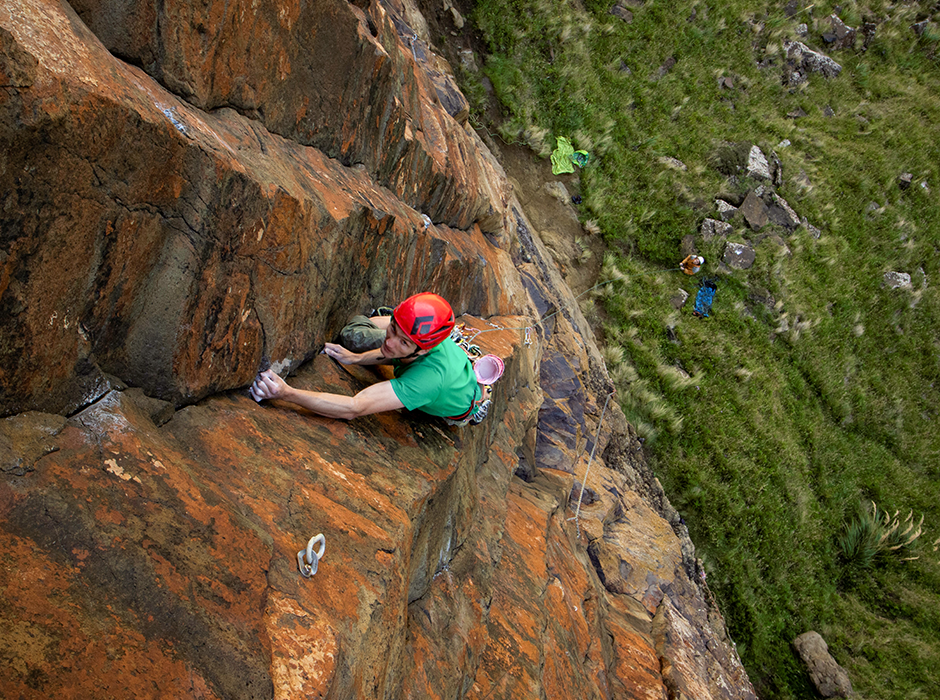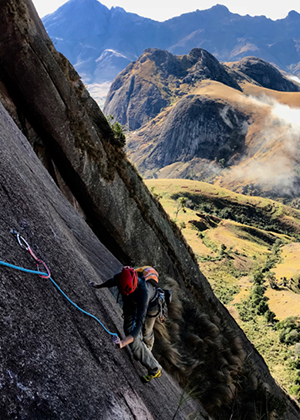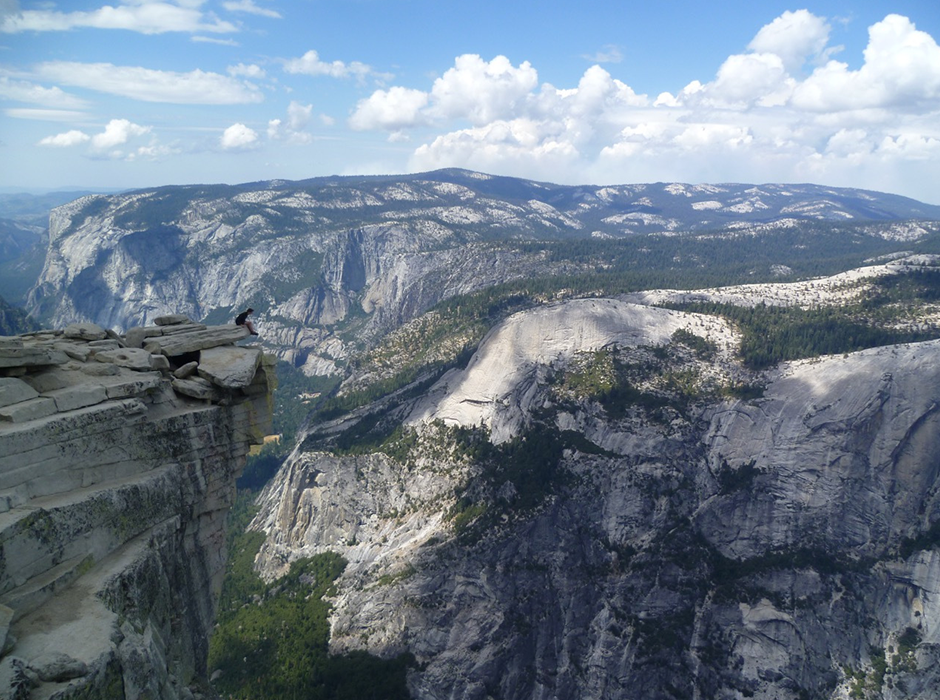
Dr Jonathan Squire ascends the basalt columns at Lover’s Leap on the Otago Peninsula. Photo credit: Gabriel Rawcliffe.
When Otago’s Dr Jonathan Squire isn’t researching astrophysical plasma and fluid dynamics, or teaching quantum physics and astronomy, he’s scaling steep rock faces for fun.
Rock climbing might not be the obvious choice of past-times for relaxing after a day at the office, but it’s been the astrophysics senior lecturer and Rutherford Discovery Fellow’s passion for 15 years.
Jonathan describes climbing as the innate childhood instinct to climb various things like trees, which has evolved into a highly athletic and structured sport where people try to get from the bottom of something to the top.
“Instead of the easiest way, we choose deliberately difficult routes that might feature very small holds or overhanging rock, requiring intricate sequences of movement to navigate, because it’s fun.”
The moves required to ascend a route might not always be obvious, necessitating some creative thinking to figure out. In some contexts, routes are referred to as ‘boulder problems’ that require solving.
As a sport, climbing blends the joy of puzzle-solving with the demands of athleticism, entailing a combination of strength, graceful gymnastic movements, and critical thinking.
However, for Jonathan, rock climbing is more than just good exercise – it’s a lifestyle.

Climbing a multi-pitch in the remote Tsaranoro Valley, Madagascar.
“It’s a great way to travel, it takes you to interesting out-of-the-way places that few others have been to, and it’s a great way to get to know and bond with people.”
Jonathan’s holiday destinations tend to revolve around the presence of majestic rock faces, from Norway to Nevada.
His most memorable trip was to the remote Tsaranoro Valley in Madagascar, where he enjoyed “fantastic climbing” on “500m high walls with flawless rock”.
In Aotearoa, his favourite area to climb is the Darran Mountains in Fiordland National Park, located along the highway to Milford Sound and featuring dramatic towering granite rock faces.
Another wonderful aspect of climbing culture is the people, Jonathan says. He describes an inclusive and supportive climbing community, where seasoned climbers and novices alike form connections and foster camaraderie over conquering challenging routes.
While climbing culture is a niche but global phenomenon, Dunedin has a particularly active and sociable community that is welcoming to beginners and inspiring for climbers looking to push their abilities, he says.
His journey as a climber kickstarted during his time as an undergraduate by going on trips with the Otago University Tramping Club.
To anyone concerned about the risks involved in rock climbing, the sport is far safer than it appears, Jonathan says.
While rock climbing had extraordinary beginnings as an extreme sport, modern-day equipment and refined practices over the decades have significantly improved safety.
“It’s not particularly dangerous compared to lots of other sports and activities, as long as you use the right systems, know what you’re doing and do things carefully.”
There are various sub-disciplines of climbing, from indoor gyms to short outdoor boulders to long alpine ‘multi-pitches’ (where the routes are longer than the standard length of rope), and each style has different levels of risk that people can engage with in different ways, he says.
“Some people do things in a very risky way, and others choose to do things in a very safe way. It’s up to the individual, and I’m more on the safe end of the spectrum.”

Living on the edge in Yosemite National Park, California.
Access to the sport has dramatically increased in recent years, attributing to the establishment of climbing gyms and university clubs, and safety standards have evolved accordingly, Jonathan says.
This shift into the mainstream is especially marked by sport climbing’s debut at the 2021 Tokyo Olympics.
For Jonathan, the lessons he’s learnt and the mindset he’s adopted from rock climbing have been useful for tackling challenges in other parts of life.
“You can try a lot harder than you expect. Sometimes you start trying something and it feels completely impossible. But then you give it a few more goes and try as hard as possible and then it eventually works.”
Figuring out difficult moves and building the requisite strength and technique to execute them requires a healthy level of resilience and confidence to not give up and keep trying, which Jonathan notes is a fundamental yet invaluable principle that applies universally to problem-solving at work and at home.
“People often don’t realise they aren’t trying as hard as they actually can, and that they are far more capable.”
As the summer season unfolds with warmer temperatures and longer days, Jonathan hopes to get outside and climb as much as possible, particularly longer multi-pitches in the mountains and harder projects around Wānaka.
- Kōrero by Social Media Coordinator, Eugene Yeo